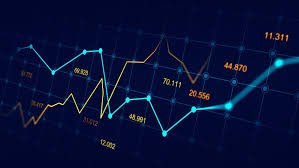
Forex exchange trading, often simply referred to as Forex trading, is a dynamic and exciting financial endeavor that attracts millions of investors worldwide. As the largest financial market, it offers unparalleled opportunities for profit. In this article, we will delve into the complexities of Forex trading, the key strategies used by successful traders, and provide valuable insights into how you can enhance your trading skills. For further resources and tools, you can visit forex exchange trading trading-terminal.com.
Understanding the Forex Market
The Forex market is a decentralized marketplace where currencies are traded. Unlike stock markets, which operate through exchanges, the Forex market is open 24 hours a day, five days a week. This global market facilitates the trading of currencies through various methods, including spot trading, forwards, and options. The primary goal of Forex trading is to profit from the fluctuating values of currency pairs; for example, trading the euro against the US dollar (EUR/USD).
Key Players in the Forex Market
Several key players participate in the Forex market, including:
- Central Banks: They implement monetary policy and influence currency valuation through interest rates and interventions.
- Financial Institutions: Including banks and investment firms, these entities trade on behalf of clients or for their own profit.
- Corporations: Multinational companies engage in Forex trading to hedge against currency risk in international transactions.
- Retail Traders: Individual traders who buy and sell currencies, often using online trading platforms.
How Forex Trading Works
Forex trading involves buying one currency while selling another simultaneously. Currencies are quoted in pairs, which indicates how much of the quote currency is needed to purchase one unit of the base currency. For example, if the EUR/USD exchange rate is 1.20, it means that one euro is equal to 1.20 US dollars. Traders can profit from the differences in exchange rates through various methods, including:
- Scalping: Short-term trading with small profits from minor price changes, often executed within minutes.
- Day Trading: Buying and selling currencies within a single trading day to capitalize on intraday price movements.
- Swing Trading: Holding positions for several days or weeks to profit from expected price shifts.
- Position Trading: A long-term strategy where traders hold positions for months or years based on fundamental analysis.

Technical Analysis in Forex Trading
Technical analysis plays a critical role in Forex trading. Traders analyze price charts and use various indicators to forecast future price movements. Some popular technical analysis tools include:
- Moving Averages: Helps to smooth out price data and identify trends over a specific period.
- Relative Strength Index (RSI): A momentum oscillator that measures the speed and change of price movements, indicating overbought or oversold conditions.
- Bollinger Bands: A volatility indicator that uses standard deviations to set upper and lower price bands around a moving average.
- Fib retracement: A tool that identifies potential support and resistance levels based on the Fibonacci sequence.
Fundamental Analysis in Forex Trading
While technical analysis focuses on price charts, fundamental analysis involves evaluating economic indicators, political events, and other factors that might affect currency values. Some essential indicators include:
- Gross Domestic Product (GDP): Measures the economic performance and health of a country.
- Employment Data: Employment rates provide insight into economic strength and consumer spending.
- Interest Rates: Central banks’ policies on interest rates directly influence currency value.
- Inflation Rates: Affect purchasing power and currency valuation.
Risk Management in Forex Trading
Effective risk management is an essential component of successful Forex trading. Traders must be aware of the inherent risk in the Forex market and develop strategies to protect their capital. Here are some key risk management techniques:
- Setting Stop-Loss Orders: Automatically exits a trade when a currency pair reaches a specified price, limiting potential losses.
- Using Position Sizing: Determining the size of a trade based on account balance and risk tolerance helps manage exposure.
- Diversifying Investments: Spreading investments across different currency pairs can reduce risk by minimizing the impact of adverse movements.
- Keeping a Trading Journal: Tracking trades can help identify patterns and improve decision-making.
Conclusion: Becoming a Successful Forex Trader
In conclusion, Forex exchange trading offers lucrative opportunities for profit, but it also requires a deep understanding of the market, effective strategies, and sound risk management. Whether you are a novice or an experienced trader, the key to success lies in continuous learning, practice, and adapting to the ever-changing market conditions. By implementing the strategies discussed and utilizing available tools, you can enhance your trading skills and work towards achieving your financial goals in the Forex market.
